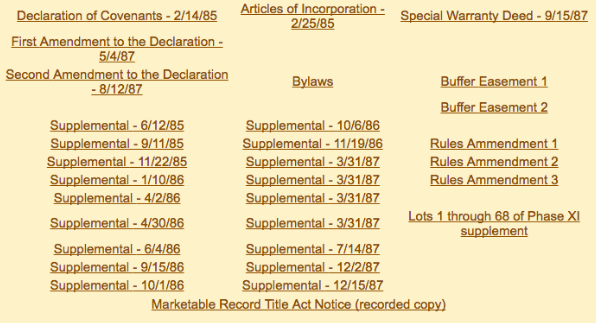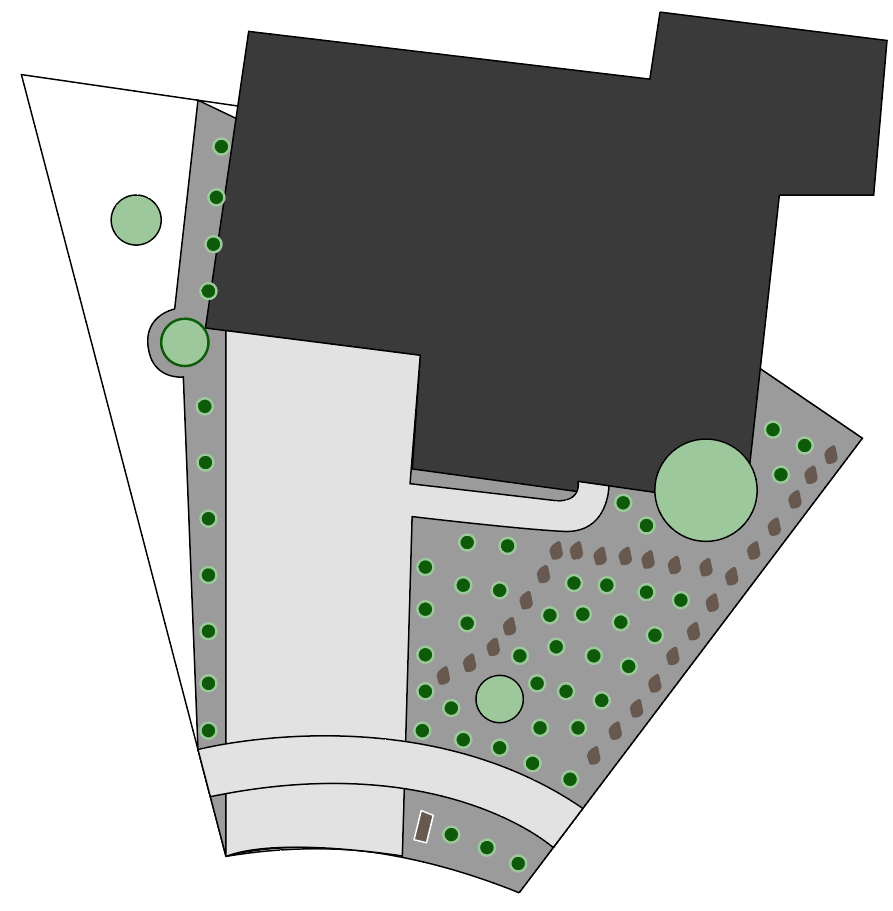This is a Work in Progress post, but wanted google to start to index some of this research for the other home owners in Alafay Woods, here in Oviedo, FL.
——
The following is everything I could find in all the addendums and in the blue book from the HOA since 1985….

4.8 General Landscaping
(Revised 10.03 11)
Exterior maintenance and landscape shall be the responsibility of the property Owner. Failure to maintain the dwelling or the landscaping in a proper manner shall result in the Association issuing a Notice of Violation.
(Refer to Section 5.11)
…
5.11 Landscaping
(Refer to Sections 4.8 and 8.0)
Landscaping in Florida plays an integral part in the overall appeal of a home and the adjoining neighborhood. Proper landscaping can increase the value of the home and the surrounding homes, just as poorly planned or maintained landscaping can decrease the value of these homes. Homeowners are requested to research available materials and plant growth or consult a professional landscaper. Answering the following questions about proposed landscape changes may be helpful.
(Revised 10.03 22)
Questions
1. How large will the planting be when mature?
Many Florida plant varieties can easily triple in size creating a cramped,
overgrown appearance, crowding out sidewalks and driveways. A tree with a dense canopy can create shade dark enough to prevent plant or grass growth underneath. Consult the specialists where plants are purchased to determine how large a specific plant will grow.
2. Will the plant material receive the proper amount of light to grow?
Many nursery plants come with tags that indicate the amount of sun or shade they will tolerate. This is particularly important in Florida because the intense summer sun will quickly kill plants that are not planted in an appropriate location.
3. Can enough supplementary water be provided to keep the plant in proper
condition?
Although traditionally Florida gets rainfall every afternoon in the spring and summer, drought conditions have existed. As a result, water has been rationed for landscape purposes. Even though extensive rationing may not currently be in effect, consider whether or not a sprinkler system is needed and the expense for water necessary to supplement rainfall.
4. What are the fertilizer requirements for the plant?
Due to the sandy composition of our soil, nutrients are readily leached from the base of the plant and must be regularly replaced to eliminate a nutritional deficiency in the plant. Healthy, growing plants are better able to withstand disease, drought, and cold temperatures.
5. Can the plant survive a sub-freezing winter night?
Consider the replacement costs of the plant in the event of a harsh winter.
6. Am I willing to work continually on the landscaping or do I want a yard which
requires less maintenance?
Annuals are certainly beautiful and provide much color, but they must be
replaced at least twice a year, and sometimes as often as four times a year.
Many plants require almost constant vigilance to keep pests away. Consider these and other maintenance issues when planning or planting.
5.11.1 Specifications
(a) Creation of a planting bed(s) in excess of 20% of the total front and side yards or 20% of the total unfenced rear yard must obtain prior approval.
(b) Plants must be kept alive and in a healthy condition. Dead or declining
plant material must be removed.
(c) In the front yard areas, a minimum of at least the original builder supplied
plant material must be maintained. Removal of plants to create a barren
view will not be allowed.
Revised 10.03 23
(d) Grass must be kept alive and as free of weeds as possible. It must be
kept mowed, trimmed and edged to create a neat appearance.
(e) Tree removal must receive prior approval from the Board of Directors as well as the City of Oviedo. A tree, which is removed, must be replaced
with another tree.
5.11.2 Applications must include:
- A plot plan showing the proposed and existing locations of the materials.
- The types and names of the new plant materials, and their anticipated
sizes currently and at maturity.
…
8.0 Items Not Requiring Prior Approval
The following items listed do not require approval by the Board of Directors. All other changes do require prior approval.
…
8.4
Downspouts and gutters, which are painted to match or compliment the color of the house.
8.5
Hanging baskets.
8.6
Hose reels and/or hangers.
8.7
House identification numbers or plaques bearing the occupant’s name providing the size is limited to twelve (12″) inches by eighteen (18″) inches. House identification numbers may be painted at the edge of the driveway near the street providing they are painted using a template no larger than three (3″) inches by eight (8″) inches per number; approved paint colors include white and yellow, and are not glaring in nature.
8.8
Landscaping, which occurs within five (5′) feet of the exterior of the house or which does not exceed 20% of the available permeable area and which does not change the grading and/or drainage pattern of the property. Landscaping which occurs totally within the confines of a rear yard with a six (6′) foot high fence and which does not change the grading and/or drainage pattern of the property.
(Refer to Section 5.11)
8.9
Edging installed in or around existing beds including aluminum, plastic,
yard timbers, bricks, or concrete edging, providing that the installation does not exceed eight (8″) inches in height and is not a permanent structure, such as a mortared wall.
8.10
Low voltage lighting for landscaping.
8.11
Curbside mailboxes which are approved for use by the United States
Postal Service.
8.12
General repairs made to roofs, driveways, exterior facades and fencing when using materials matching the existing.
8.13
Seasonal decorations, providing they are placed and removed within 45 days of the event, and do not create a nuisance for the neighborhood.
(Refer to Section 5.12)
8.14
Statuary and fountains not exceeding three (3′) foot in height or three (3′) foot in width, or those which occur totally within the confines of a rear yard with a six (6′) foot high fence and are not visible above the fence.
8.15
United States flags displayed from a removable stand on a temporary basis, such as national holidays or wartime. (Refer to Section 5.9)
8.16
Vegetable gardens which occur totally within the confines of a rear yard with a six (6′) foot high fence and which does not change the grading and/or drainage pattern of the property. (Refer to Section 5.21)
…
Download your copy of the Blue Book here!
A list of things we might plant
- blueberries busses
- cabbage
- swish chard
- kail
- collard greens
- rhubarb
- artichoke
- asparagus
- spinach
- currents
- marigolds
- herbs
- alpine strawberries

